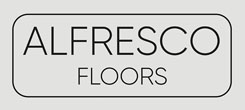
26 Jun Fire Ratings For External Floors Explained

Alfresco Floors is dedicated to making absolutely certain that all of our customers are fully informed on the standard of quality to which our products are held. Our products adhere to all relevant safety standards, regulations, and related advice as set down by fire safety authorities.
We endeavour to help you understand fire regulations for external flooring, fire regulations in general for class A-rated materials, and for non-combustible materials.
Building regulations developed by the government apply to almost every building, but especially to those which are to be used by the public. These regulations designate the minimum fire safety standards to which any building, building feature, or alteration must adhere. Class A rated materials represent this standard by providing reliable and consistent fire-resistance.
Other blog posts on this subject:
- THE USE OF NON-COMBUSTIBLE MATERIALS: WHAT THE LAW STATES
- HOW ARE MATERIALS TESTED FOR FIRE RATINGS?
- WHAT’S THE DIFFERENCE BETWEEN A1 AND A2 FIRE RATING?

What Are Class A Rated Materials?
Class A is a designation that indicates a material exhibits properties resulting in the minimum spread of flame. The Fire Test Classification EN 13501-1 separates materials into one of three classifications: flooring, construction, and linear pipe.
In these groups, materials are graded from A to F. An “A” rating means the material has met the EN ISO 1716 and the EN ISO 1182 standard. Materials classified with an “A” rating are considered non-combustible. An “F,” by contrast, means the material has failed to meet the standard and is considered “easily flammable.”
The other properties that are evaluated include classifications for resistance to burning droplets and the rate at which the material produces smoke when exposed to significant heat or flame.
To learn more about A rated materials, ready our recent blog post here.
2019 Updates on Non-Combustible Materials for Balconies (and other external applications)
In June of 2019, the government issued advice regarding the fire safety of balconies on buildings. The advice followed changes made to Building Regulations in 2018.
The advisory note reads, in part;
“The Expert Panel advises that removal and replacement of any combustible material used in balcony construction is the surest way to prevent external fires from spreading from balconies to other external features, and is necessary therefore in order to meet building regulation requirements…”
The release of this advisory note was inspired by a major fire in a six-floor residential building. The fire resulted in no loss of life, fortunately. But investigators found that the balconies exhibited poor design in terms of fire safety. No flame retardant was used in the timber and multiple pieces of untreated softwood timber were used for decoration.
What These New Fire Regulations Mean for Your Existing External Applications
Because the advisory note was just that, an advisory note, it could mean the response of officials to any structures that may potentially not rise to the standard may be subject to their discretion.
The best way to exhibit regulatory compliance, and meet the real-world standards of fire safety, is to be sure your balconies and other external flooring applications (such as walkways, terraces and roof gardens) meet the EN ISO 1716 and the EN ISO 1182 standard.
To learn more about which materials are needed to bring your structures into regulatory compliance, talk to an expert today.




Pingback:What is Class A Decking? - Alfresco Floors
Posted at 12:42h, 07 December[…] Splitting Class A into A1 and A2 we can take a look at some construction materials for decking that would be approved. A1 materials are completely non-combustible whereas A2 materials have incredibly limited combustibility. Both types are considered non-combustible and are permitted on external applications on buildings of any height. […]
Pingback:What Surface Materials Deliver Class A Decking? - Alfresco Floors
Posted at 13:40h, 11 December[…] must be remembered that Class A can be split into Class A1 and A2 and are still approved construction materials for decking. A1 materials are completely […]